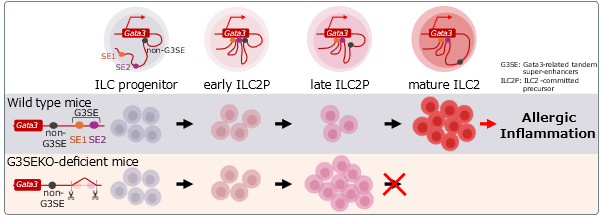
Group 2 innate immune system lymphoid cells (ILC2s) are involved in allergic diseases. But currently, therapy targeting ILC2s is not available. However, in an interesting study by Chiba University in Japan, researchers have identified a novel mechanism of ILC2 development. The researchers used single-cell RNA sequencing to discover regulatory regions in the genome that are associated with ILC2 development. These findings can help develop treatment strategies for allergic diseases.
We asked Dr. Sanjeev Jain, renowned allergist and immunologist from Columbia Allergy, about this exciting discovery, and here’s his take:
This study represents a significant advance in basic science immunology research. We have known for 25 years that GATA3 is a master switch for allergic inflammation. This intracellular protein molecule is called a transcription factor, and it specifically switches certain genes off and on to induce and promote allergic inflammation. Further, it has been known that ILC2 cells are part of the “innate” arm of the immune system, and they are partially responsible for initiating an allergic inflammatory response. What the authors of this article are able to show is that in ILC2 cells, there are regions of DNA called “enhancers” which are critical for the generation of GATA3. They also demonstrate that GATA3 exerts its effect in the maturation of ILC2 cells through another protein called CNOT6L.
Scientists have been working for the last 25 years to develop an inhibitor of GATA3 to suppress allergic inflammation without any success so far. The authors of this publication suggest that inhibiting CNOT6L may be another pathway to inhibit allergic inflammation. However, this study is a basic science study, and it will be years if not decades before knowledge gained from this study could be applied to treat patients.




















